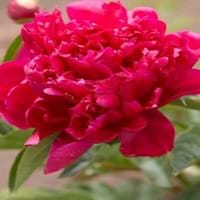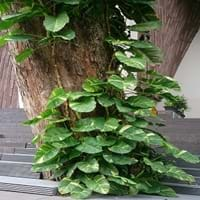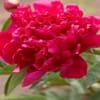Life Span
Perennial
Perennial
Origin
Hybrid origin
Australia, China, India, Japan
Types
Aristocrat, Buckeye Belle, Henry Bockstoce , Abalone Pearl, Coral Supreme, Cytherea, Charlie's White
Marble Queen, species itself, Neon, all-green
Habitat
Hillside, Woods
Humid climates, Tropical regions
USDA Hardiness Zone
Not Available
10-11
Sunset Zone
Not Available
Not available
Habit
Clump-Forming
Prostrate/Trailing
Minimum Height
Not Available
Flower Color
Not Available
White
Flower Color Modifier
Bicolor
Not Applicable
Fruit Color
Not Available
Yellow Brown
Leaf Color in Spring
Not Available
Yellow
Leaf Color in Summer
Not Available
Light Green
Leaf Color in Fall
Not Available
Light Green
Leaf Color in Winter
Light Green
Light Green
Leaf Shape
Compound
Ovate
Plant Season
Spring, Summer
All year
Sunlight
Full Sun, Partial Sun, Partial shade
Partial shade
Type of Soil
Clay, Loam
Loamy
The pH of Soil
Acidic, Neutral, Alkaline
Neutral
Soil Drainage
Average
Light
Bloom Time
Not Available
Mid Summer
Tolerances
Drought
Dry soil, Shade areas, Sun
Where to Plant?
Ground, Pot
Ground, Pot
How to Plant?
Grafting, Seedlings, Stem Planting, Transplanting
Seedlings, Stem Planting
Plant Maintenance
Medium
Medium
Watering Requirements
Does not require lot of watering, It cannot sustain wet-feet, Keep the ground moist but not water-logged, Needs watering once a week, Prefer drip-irrigation instead of Over-head watering, Water occasionally
Do Not over Water, Never Over-water, Water when top layer of soil becomes dry
In Summer
Lots of watering
Lots of watering
In Spring
Moderate
Moderate
In Winter
Average Water
Less Watering
Soil pH
Acidic, Neutral, Alkaline
Neutral
Soil Type
Clay, Loam
Loam
Soil Drainage Capacity
Average
Average
Sun Exposure
Full Sun, Partial Sun, Partial shade
Full Sun, Partial Sun
Pruning
Do not prune during shooting season, Prune to control growth, Remove dead or diseased plant parts, Remove deadheads
Remove damaged leaves, Remove dead branches, Remove dead leaves
Fertilizers
All-Purpose Liquid Fertilizer
All-Purpose Liquid Fertilizer
Pests and Diseases
Botrytis Blight, Leaf spot, Stem spot, Viruses
Mealybugs, Mites, Scale
Plant Tolerance
Drought
Drought
Flowers
Yes
Insignificant
Flower Petal Number
Not Available
Not Available
Foliage Texture
Not Available
Medium
Foliage Sheen
Not Available
Glossy
Allergy
Not Available
no allergic reactions
Aesthetic Uses
Beautification, Bouquets, Showy Purposes, Used for decorating walls, fences, gates, hedges, etc.
Beautification, Cottage Garden, Landscape Designing, Showy Purposes
Beauty Benefits
Not Available
No Beauty Benefits
Environmental Uses
Air purification
Air purification, Food for insects, Provides ground cover
Medicinal Uses
Cough, Gout, Headache, Heartburn, Kidney problems, Upset stomach, Urinary tract problems
ascites
Part of Plant Used
Flowers, Root, Seeds
Stem
Other Uses
Showy Purposes, Used as Ornamental plant, Used for fragrance
NA
Used As Indoor Plant
No
Yes
Used As Outdoor Plant
Yes
Yes
Garden Design
Cutflower, Feature Plant, Foundation, Mixed Border
Cutflower, Dried Flower/Everlasting, Mixed Border
Botanical Name
PAEONIA 'Rachel'
Epipremnum aureum
Common Name
Intersectional Peony
Hunter's robe, Money plant
In Hindi
Intersectional Peony
मनी प्लांट
In German
Intersectional Pfingstrose
Geld-Anlage
In French
intersectionnelle Pivoine
usine de l'argent
In Spanish
interseccional Peony
planta de dinero
In Greek
διατομεακές Παιώνια
φυτό χρήματα
In Portuguese
interseccional Peony
planta de dinheiro
In Polish
międzysegmentowe Piwonia
pieniądze roślin
In Latin
Intersectional AGLAOPHOTIS
pecuniam herba
Phylum
Tracheophyta
Magnoliophyta
Class
Magnoliopsida
Liliopsida
Order
Saxifragales
Alismatales
Family
Paeoniaceae
Brassicaceae
Clade
Angiosperms, Core eudicots, Eudicots
Angiosperms, Monocots
Tribe
Not Available
Monstereae
Subfamily
Not Available
Monsteroideae
Season and Care of Intersectional Peony and Moneyplant
Season and care of Intersectional Peony and Moneyplant is important to know. While considering everything about Intersectional Peony and Moneyplant Care, growing season is an essential factor. Intersectional Peony season is Spring and Summer and Moneyplant season is Spring and Summer. The type of soil for Intersectional Peony is Clay, Loam and for Moneyplant is Loamy while the PH of soil for Intersectional Peony is Acidic, Neutral, Alkaline and for Moneyplant is Neutral.
Intersectional Peony and Moneyplant Physical Information
Intersectional Peony and Moneyplant physical information is very important for comparison. Intersectional Peony height is 71.10 cm and width 60.00 cm whereas Moneyplant height is Not Available and width 60.00 cm. The color specification of Intersectional Peony and Moneyplant are as follows:
Intersectional Peony flower color: Not Available
Intersectional Peony leaf color: Not Available
Moneyplant flower color: White
- Moneyplant leaf color: Yellow
Care of Intersectional Peony and Moneyplant
Care of Intersectional Peony and Moneyplant include pruning, fertilizers, watering etc. Intersectional Peony pruning is done Do not prune during shooting season, Prune to control growth, Remove dead or diseased plant parts and Remove deadheads and Moneyplant pruning is done Remove damaged leaves, Remove dead branches and Remove dead leaves. In summer Intersectional Peony needs Lots of watering and in winter, it needs Average Water. Whereas, in summer Moneyplant needs Lots of watering and in winter, it needs Less Watering.





